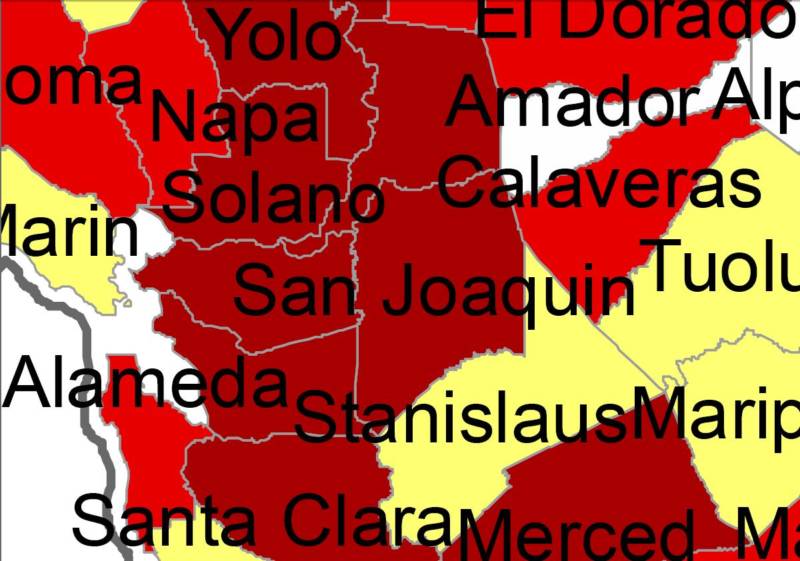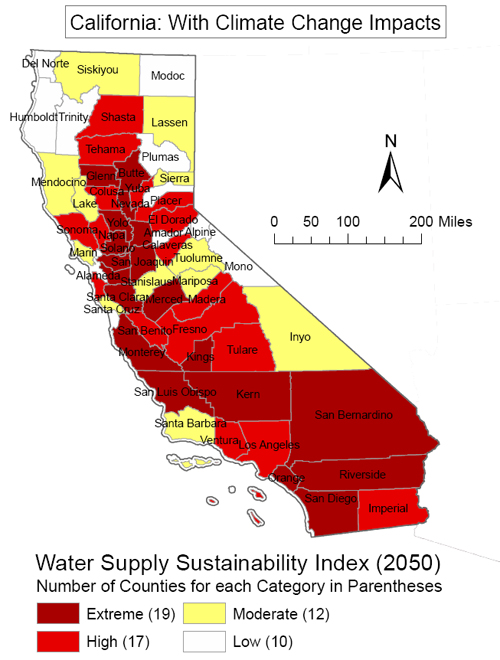More than eight out of ten California counties will face frequent water shortages within 40 years. That’s the conclusion of a report released this week by Tetra Tech for the Natural Resources Defense Council.

“This report is a real eye opener,” says Theo Spencer, senior advocate for the NRDC’s Climate Center. “It shows the toll climate change will take on the water resources in the U.S.”
Tetra Tech projects that climate change will exacerbate water problems in more than a third of counties across the US. In California, the outlook is worse. Forty-eight counties (83%) will be at risk by 2050, and 19 counties are on the critical list, those the report describes as under “extreme risk.” Only ten counties, mostly at the northern end of the state, were assigned to the low-risk category.
In the report, the authors have mapped the entire US according to drought risk, parsing data to the county level. The number of counties listed at greatest risk for water shortages is 14 times greater than in previous studies. Critical regions are the Great Plains and the Southwest. The report uses the most recent data from the US Department of Agriculture and other agencies, as well as the most recent climate models from the Intergovernmental Panel on Climate Change (IPCC) to evaluate water withdrawal.
As the climate continues to warm, there will be a tighter squeeze on water supplies. These stresses include a shriveling Sierra snowpack and earlier spring runoff, which result in reduced water storage capacity. The report also projects precipitation to decrease in some parts of California by five inches per year, by 2050. Rising surface temperatures imply greater moisture loss in vegetation and on the ground surface.
In California alone, the counties at risk for water sustainability produce $21 billion in agricultural crops. “The state’s economy is at risk if we don’t change,” says Spencer. “If we keep acting the way we’re acting, we’ll be in serious trouble by 2050.”
The report warns that without any comprehensive climate policy, demand for freshwater will overtake available supply in this century.

2 thoughts on “California Counties Face Water Crunch”
Comments are closed.

Those with single family homes can start by ripping out those ridiculous, useless lawns on which people typically waste 60 gallons of water per day. Install synthetic grass – it uses ZERO water, doesn’t need to be mowed, and looks exactly the same as real grass.
D. Salazar:
You advocate PLASTIC, made from fossil fuels? Some brands of which are known to transfer toxic heavy metals to kids?
Plant a garden! Indeed, plant a “food forest.” Put it on drip and use a small fraction of the scarce water that the lawn did. Or, become a xeroscaper. Plant beautiful native California annuals, shrubs, and trees that need only our winter rains. The amounts of labor required: lawn, most; garden, less; xeroscape, much much less.